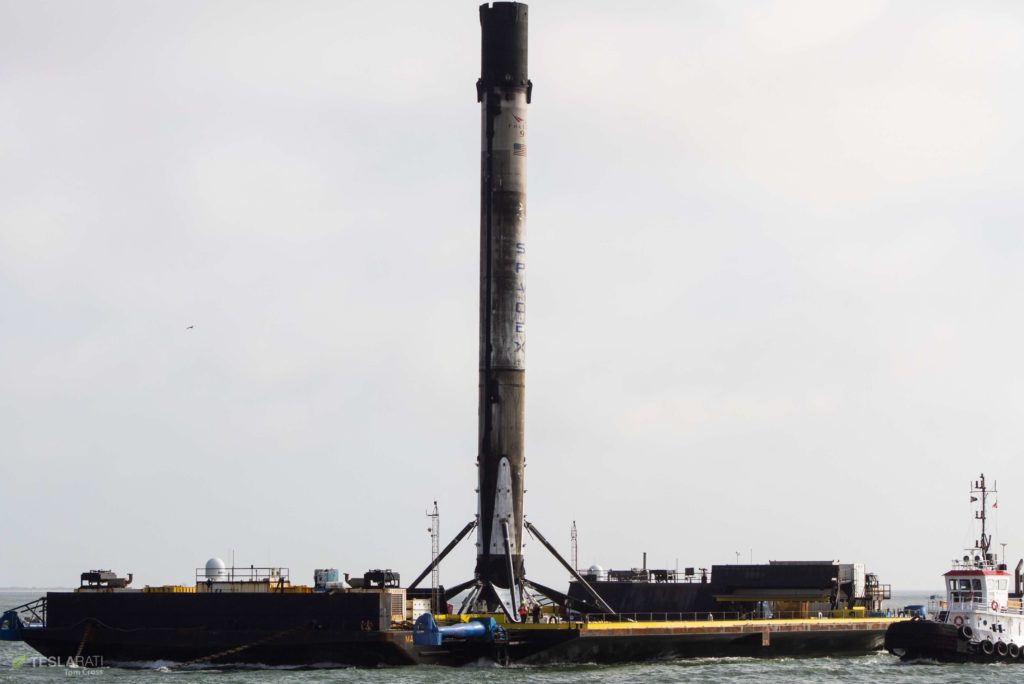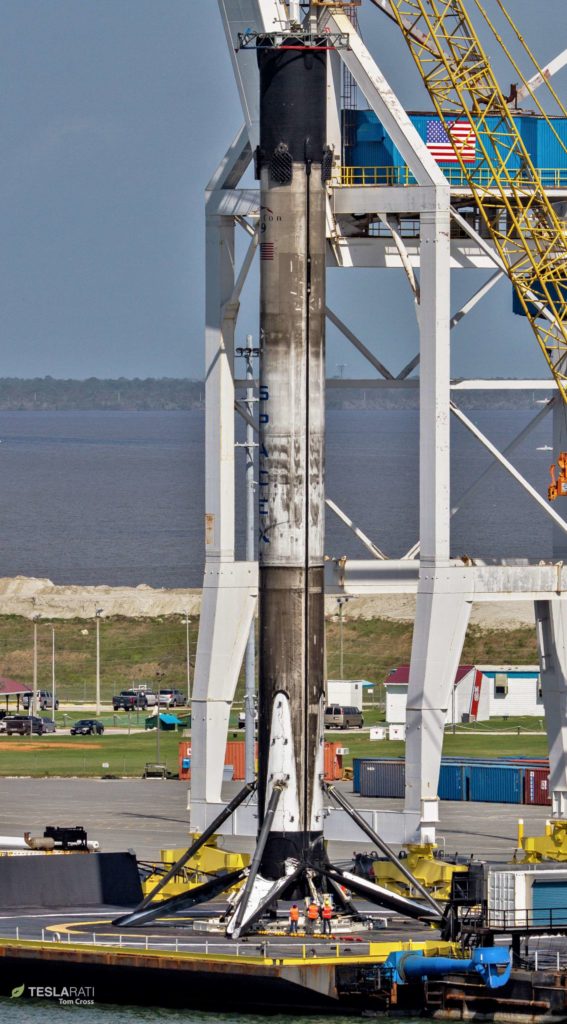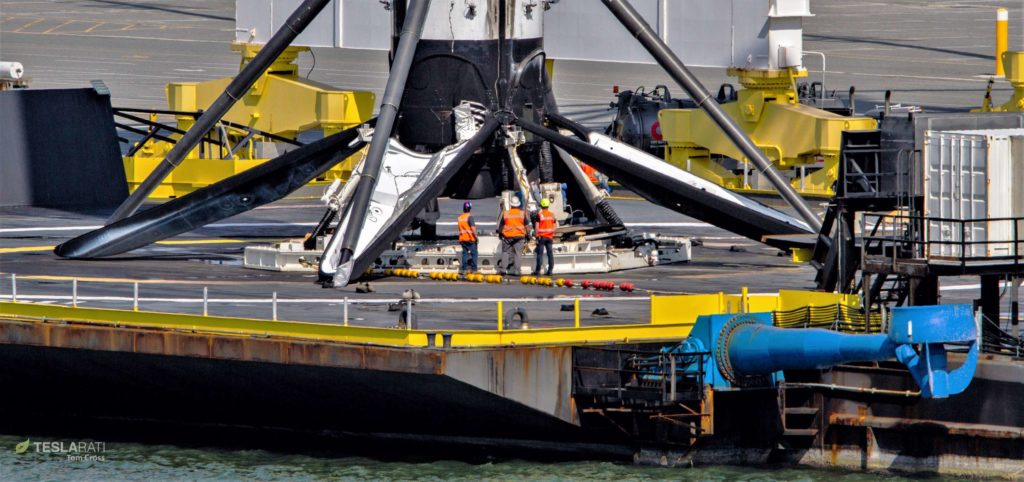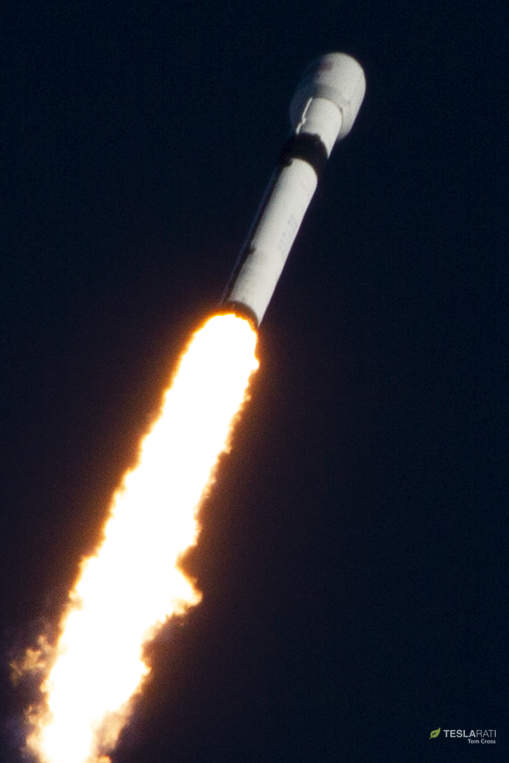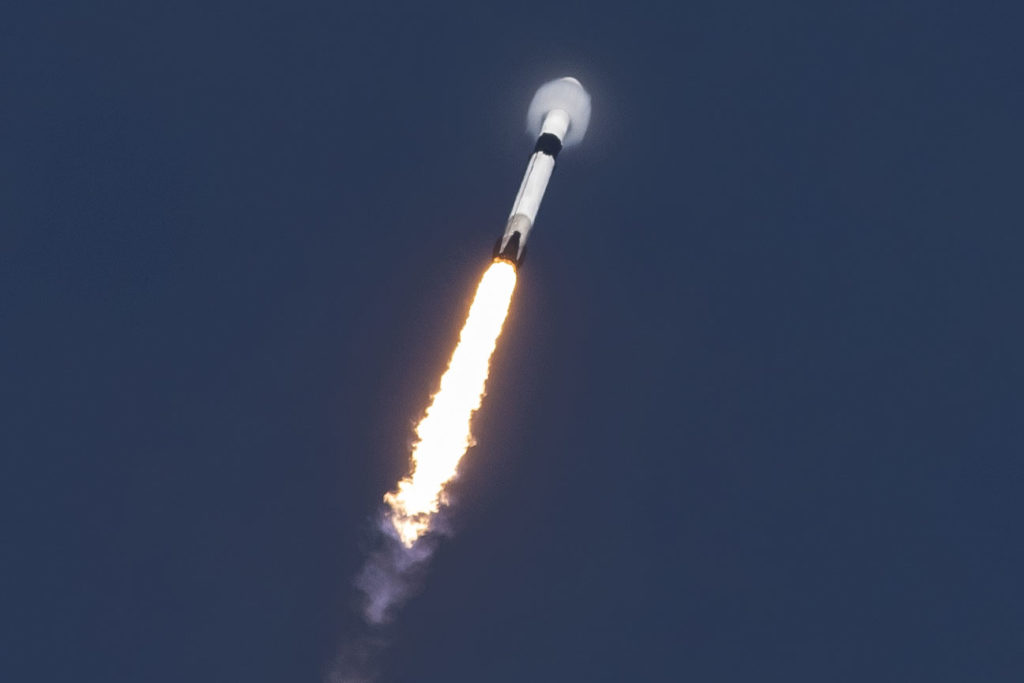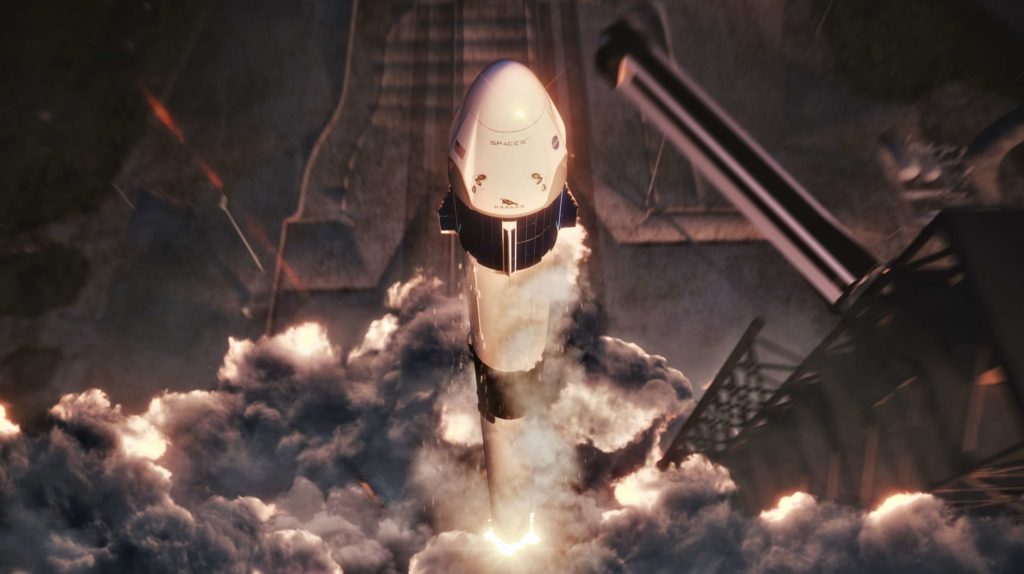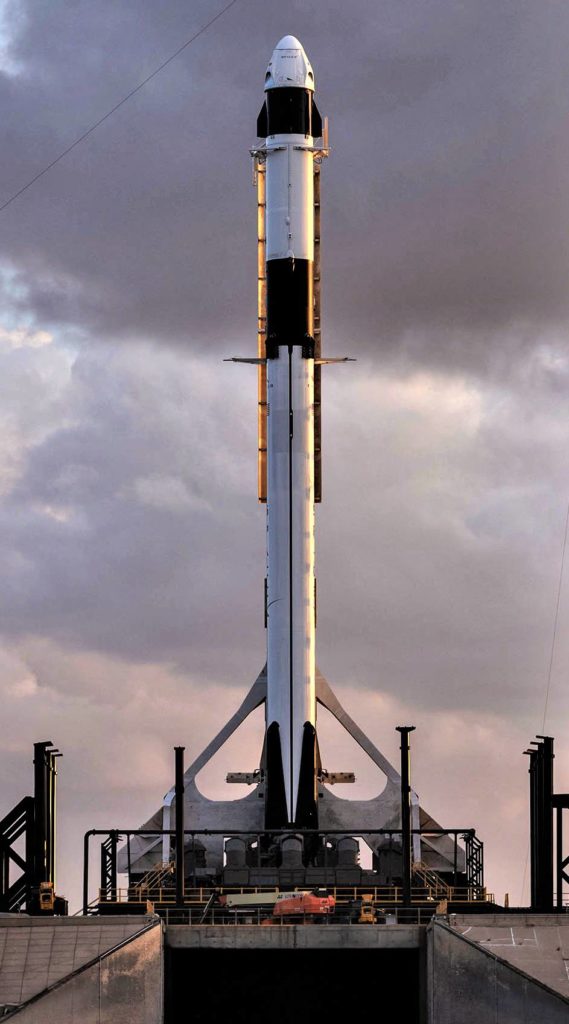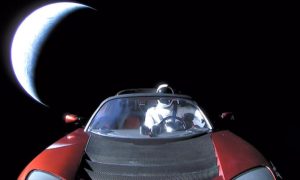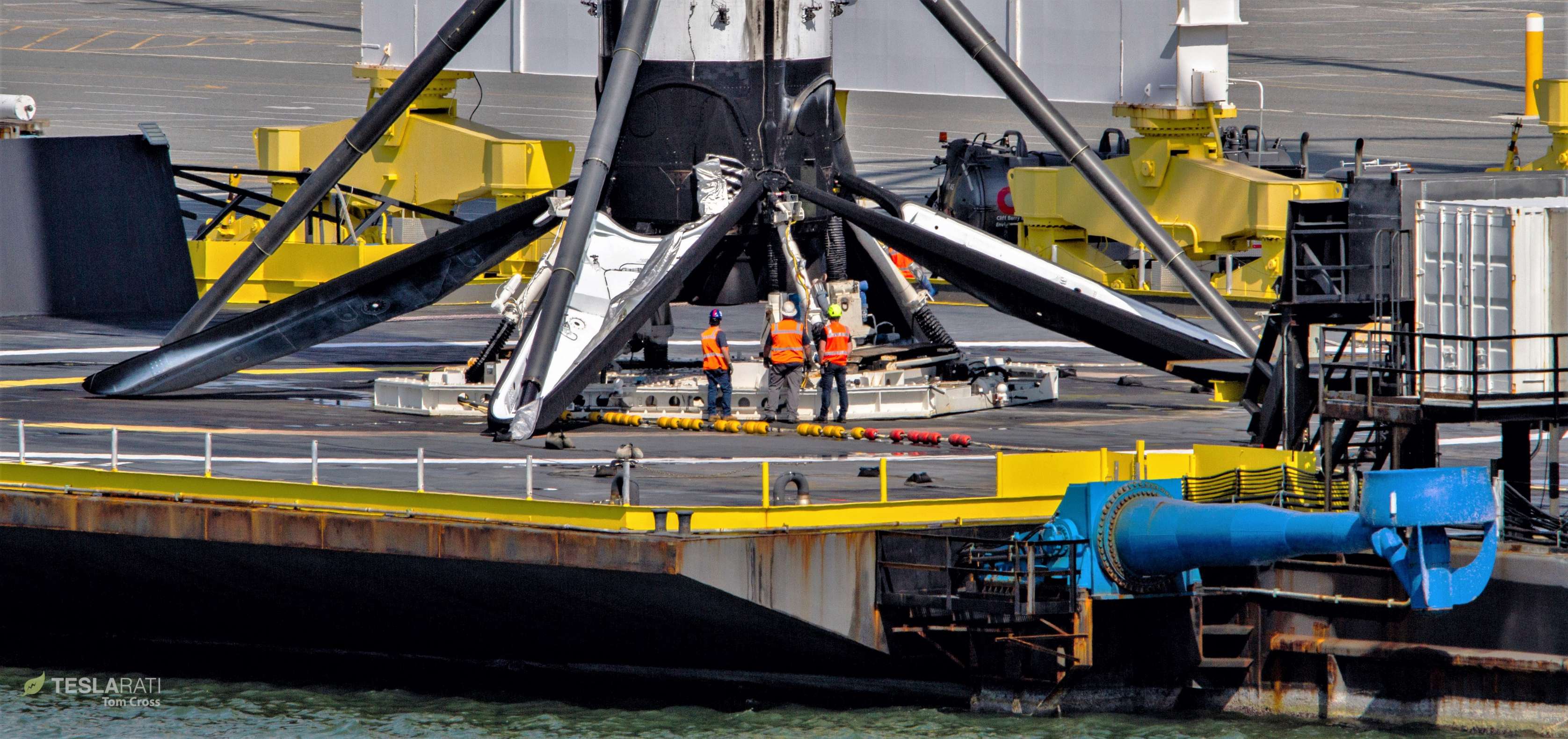

SpaceX
SpaceX Falcon 9 rocket lands for the last time ahead of risky in-flight abort test
SpaceX’s latest successful launch and landing has wrapped up with Israeli Moon lander Beresheet on its way to Earth’s neighbor, Indonesian communications satellite PSN-6 headed to its final orbit, and the second thrice-flown Falcon 9 Block 5 booster safely returned to Port Canaveral aboard drone ship Of Course I Still Love You (OCISLY).
Known as Falcon 9 B1048, its third successful landing and recovery will almost certainly be this booster’s last after its fourth launch was officially assigned to a critical Crew Dragon launch abort test, one that the booster is very unlikely to survive. According to SpaceX CEO Elon Musk, that test could occur as early as April and will push the first flight-proven Crew Dragon space capsule to its limits.
https://twitter.com/_TomCross_/status/1099688043009753088
After weathering what Musk also described as the toughest reentry and heating conditions yet experience by a Falcon 9 booster meant for recovery, Falcon 9 B1048 landing (almost) flawlessly aboard drone ship OCISLY, stationed roughly 700 km (430 mi) off the Florida coast. Hinted at by the booster’s very slight lean on the recovery vessel’s deck, B1048 most likely cut thrust (or ran out of fuel) just before the optimal stop point, causing the rocket to fall a few unintended feet onto OCISLY and eat into part of the aluminum honeycomb ‘crush-core’ present on all Falcon landing legs.
Reentry, even at 1/4 of orbital speed is hard pic.twitter.com/Tk2KJblWH5
— Scott Manley (@DJSnM) February 22, 2019
In essence, that crushable aluminum acts as a very rough form of emergency suspension meant to minimize potential damage to the fragile structure of Falcon booster propellant tanks at the cost of its landing legs. In the case of B1048’s third landing, the lean appears to be no more than a few degrees – scarcely out of the ordinary, at least relative to past leaning boosters. Most notably, Falcon 9 B1023 experienced a similar anomaly and a far worse lean after its first landing, an experience that did not apparently impact its ability to launch for the second time as a side booster for Falcon Heavy’s inaugural launch.
- Falcon 9 B1048 returned to Port Canaveral on February 24th after its third successful launch and landing. (Teslarati)
- B1048.3 beside its human caretakers. (Tom Cross)
- Octagrabber robots are meant to prevent boosters from sliding off of drone ship decks by anchoring them with their tank-like weight. (Teslarati)
B1048’s slight departure from a perfect trajectory should thus pose no problem for in-place plans for the rocket’s fourth (and likely final) launch. Known as Crew Dragon’s in-flight abort (IFA) test, SpaceX specifically requested the inclusion of a second abort test (above and beyond NASA’s testing requirements) to fully verify that astronauts could be pulled to safety at any point during launch. In 2015, the company completed a pad abort test of Crew Dragon, demonstrating that the spacecraft could escape from a failing rocket while static on the launch pad. The in-flight abort is precisely what it sounds like: a demonstration that Crew Dragon can safely escape a failing rocket while in flight. More than simply being in flight, the goal is to demonstrate a successful abort at the point of peak aerodynamic stress of Falcon 9 and Dragon, known as Max Q.
For Cargo Dragon launches, Falcon 9 has typically averaged dynamic forces of about 25 kPa (~4 psi), roughly equivalent to 2.5 tons of force per square meter. During launch, either the payload fairing or Cargo/Crew Dragon are subjected directly to those forces, often requiring a significant period of lower throttle to mitigate the forces those sensitive assemblies experience. Given that Crew Dragon’s abort scenario accelerates the capsule and trunk from a relative speed of zero to nearly 350 mph (150 m/s) in five seconds, the dynamic forces (i.e. mechanical loads and heating) the spacecraft is experiencing could jump 50% or more almost instantaneously.
- Falcon 9 B1054 around the time of Max Q. (Tom Cross)
- While it doesn’t necessarily correlate with Max Q, vapor cones like the one on B1047’s fairing are a partial visualization of Max Q forces. (SpaceX)
- An official SpaceX render shows Falcon 9 and Crew Dragon lifting off from Pad 39A. (SpaceX)
- Falcon 9 B1051 and Crew Dragon vertical at Pad 39A. (SpaceX)
After Crew Dragon aborts, the Falcon 9 stack – featuring B1048 and a full-fidelity upper stage with a mass simulator in place of its MVac engine – will be instantaneously exposed to those same dynamic forces, experientially equivalent to bellyflopping from an Olympic-height diving platform. The upper stage may actually be better off than the booster thanks to the generally smooth dome at its stern, whereas Falcon 9’s booster would have its interstage – a deep, open cylinder – exposed to the same airflow if or when the upper stage is torn away. At the point of abort, Falcon 9 will most likely be in the process of shutting down its Merlin 1D engines, effectively removing the booster’s control authority and leaving it at the mercy of the atmosphere. SpaceX’s CRS-7 Cargo Dragon failure (caused by the second stage losing structural integrity mid-flight) is actually a decent representation of what is likely to happen to B1048 and its upper stage.
Given the potential destructive power B1048 will face, not to mention the fact that the booster will likely not have grid fins or landing legs installed, today’s recovery will probably be the last time the rocket returns to port and prepares for another launch. Explicitly dependent upon the refurbishment of DM-1’s Crew Dragon capsule, SpaceX’s in-flight abort is not expected to occur until June 2019, although Musk has indicated that the aspirational target is to perform the test as early as April, perhaps less than 60 days after the capsule is scheduled to land in the Atlantic Ocean.
Check out Teslarati’s newsletters for prompt updates, on-the-ground perspectives, and unique glimpses of SpaceX’s rocket launch and recovery processes!
News
SpaceX and Elon Musk explain potential reasons for Starship loss
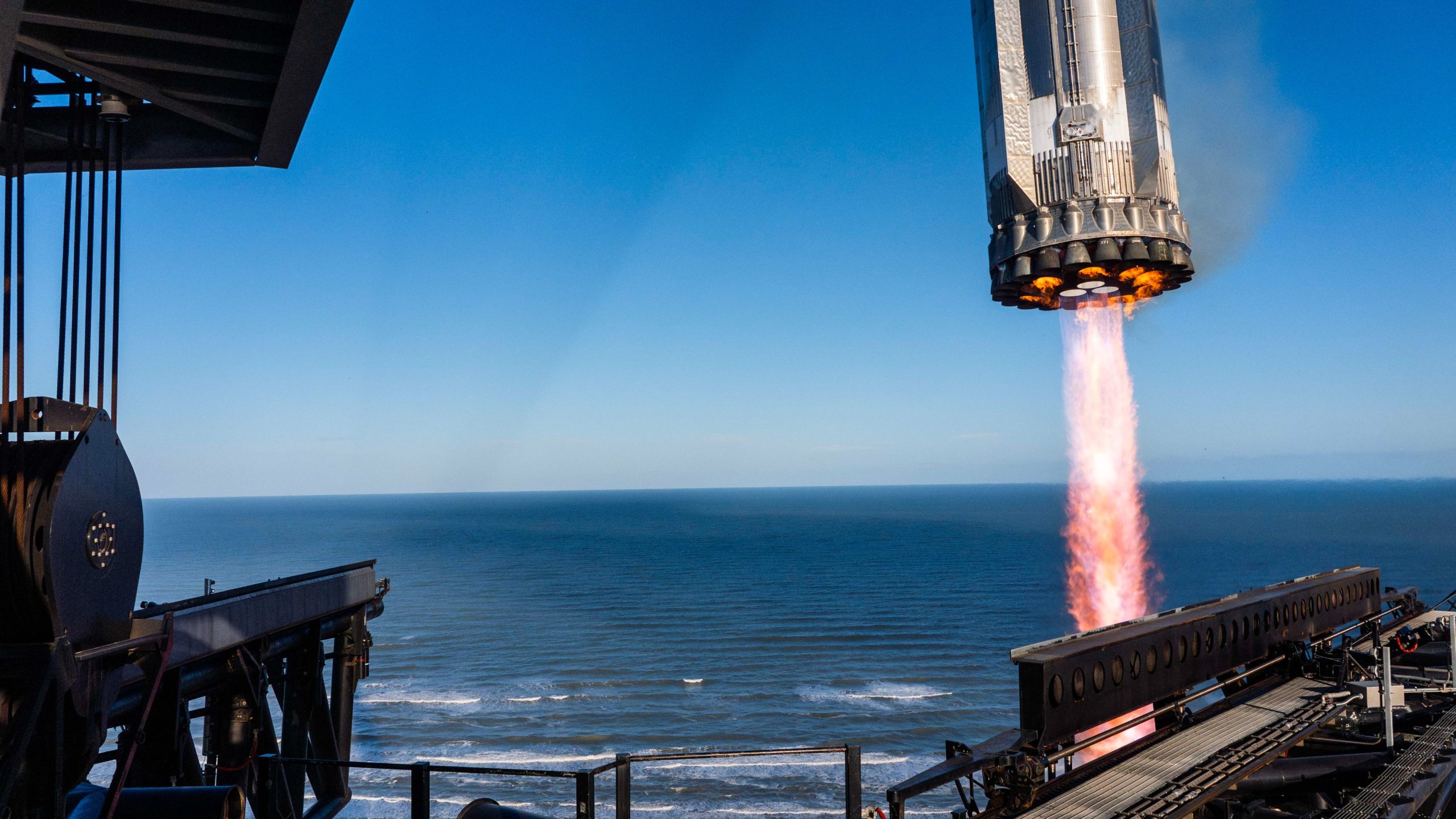
SpaceX and its CEO Elon Musk are starting to shed some light on the potential reasoning for the loss of Starship yesterday, which was lost after a successful launch and catch of the lower-stage booster.
Starship was lost during its ascension, and debris rained down over the Caribbean less than an hour after SpaceX lost all communication with the spacecraft.
A few hours after the launch was over, SpaceX started to shed some light after looking at preliminary data that the rocket left behind.
The company said that a fire developed in the aft section of Starship:
“Following stage separation, the Starship upper stage successfully lit all six Raptor engines and performed its ascent burn to space. Prior to the burn’s completion, telemetry was lost with the vehicle after approximately eight and a half minutes of flight. Initial data indicates a fire developed in the aft section of the ship, leading to a rapid unscheduled disassembly with debris falling into the Atlantic Ocean within the predefined hazard areas.”
Additionally, Musk said that there was some sort of oxygen or fuel leak in the cavity above the ship engine firewall.
The leak was evidently large enough to build more pressure than the vent was able to handle:
🚨Elon Musk has also said an oxygen or fuel leak in the cavity above the ship engine firewall could be the cause of the anomaly. https://t.co/BgLkdA9Kk1
— TESLARATI (@Teslarati) January 17, 2025
Some also seemed to recognize evidence of fires throughout the flight of Starship, which is obviously an anomaly:
Unconfirmed but what looks to be fire at the hinge of Starship’s flap. A potential RUD? We await as we get any confirmation from SpaceX.
They do not have comms with the spacecraft as this moment. pic.twitter.com/Cn1EF4AHpv
— Mihir Tripathy (@mihirneal) January 16, 2025
There will be more information regarding the loss of Starship in the coming days and weeks, but Musk already believes that a bit of fire suppression and more volume in the cavity above the ship engine firewall could fix the issue.
“Nothing so far suggests pushing next launch past next month,” he said, so Flight 8 could happen sometime in February.
Need accessories for your Tesla? Check out the Teslarati Marketplace:
- https://shop.teslarati.com/collections/tesla-cybertruck-accessories
- https://shop.teslarati.com/collections/tesla-model-y-accessories
- https://shop.teslarati.com/collections/tesla-model-3-accessories
Please email me with questions and comments at joey@teslarati.com. I’d love to chat! You can also reach me on Twitter @KlenderJoey, or if you have news tips, you can email us at tips@teslarati.com.
News
SpaceX completes second catch of lower stage, but loses Starship
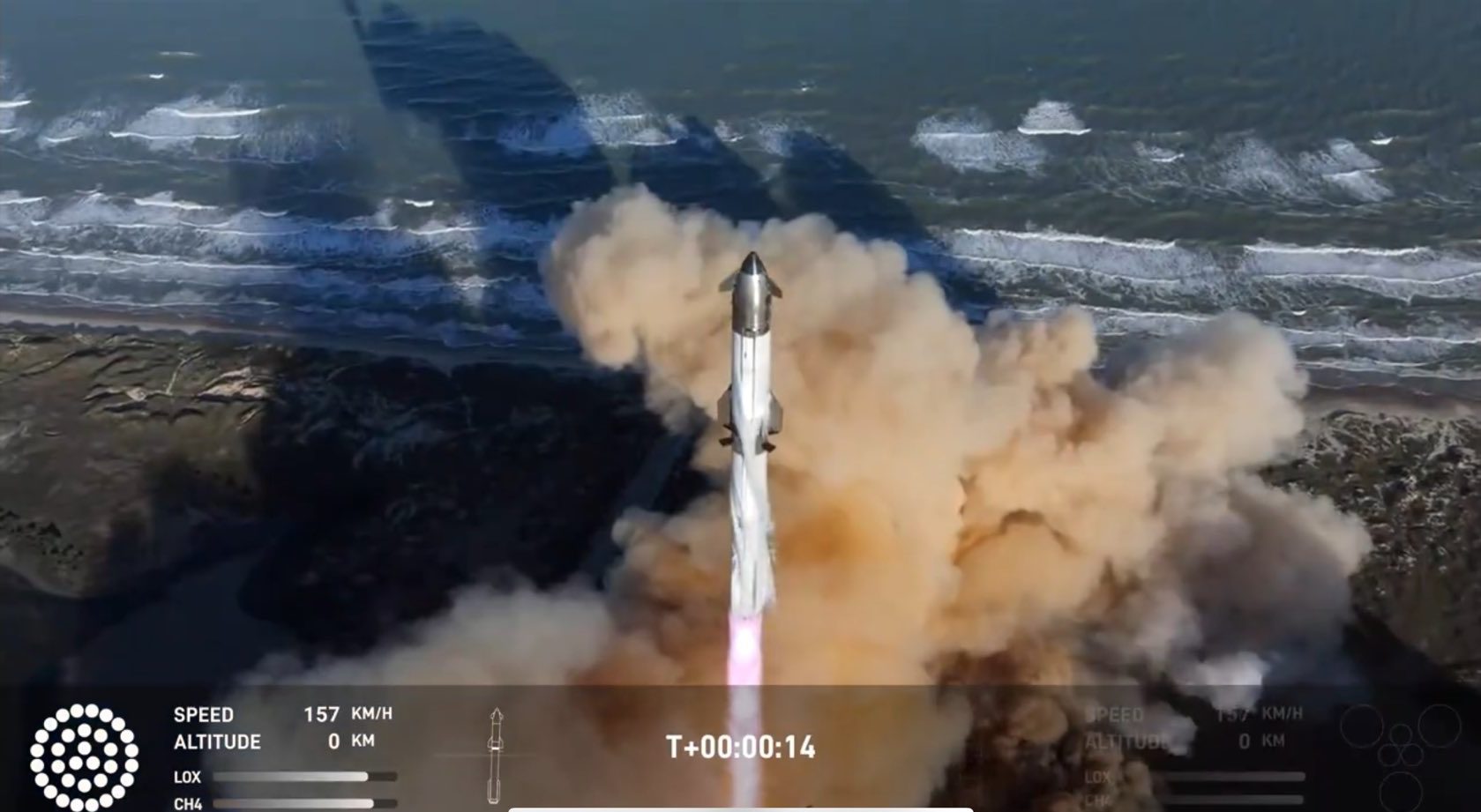
SpaceX completed its seventh launch of Starship on Thursday, accomplishing a clean liftoff and catch of the first-stage booster. However, the upper stage was lost after its ascent.
The launch took place just a few minutes after 5 p.m. on the East Coast, as the first attempts at getting Starship in the air for the seventh time were delayed by weather both last week and this week.
Conditions were favorable on Thursday as SpaceX looked to follow up a successful campaign by Blue Origin, Jeff Bezos’s company, earlier today.
SpaceX went into the seventh Starship launch with plans for a catch attempt of the first-stage booster, something it attempted and completed during the fifth test launch last year. It decided to skip a catch attempt with the sixth test flight as conditions were not aligned.
For now, SpaceX is extremely selective as to when it attempts catches.
However, it was successful during this attempt, its second completed catch:
🚨 🚀 Here is @SpaceX’s full catch of the Lower Stage Booster from Starship Flight 7! pic.twitter.com/IXIRAGr1Md
— TESLARATI (@Teslarati) January 16, 2025
This flight differed from previous launches as SpaceX rolled out several improvements to the rocket and the processes as it featured plans to do a Starlink deployment simulation and had various adjustments to flap placement and avionics.
These plans were disrupted by the fact that SpaceX lost all communications with Starship about ten minutes into the flight, which the aerospace company confirmed was a result of losing the spacecraft sometime during its ascent.
🚀🚨 Telemetry on Starship has been lost. All comms with the ship have been lost, and SpaceX’s livestream says this is an “anomaly.”
“We are assuming the ship has been lost.” pic.twitter.com/fyyCNuXVRg
— TESLARATI (@Teslarati) January 16, 2025
Although the catch was successful, the loss of the actual rocket seemed to be a huge damper on the entire event. SpaceX confirmed several minutes after the loss of communications that the rocket was destroyed and was lost.
It was its first failure since the second Starship launch in November 2023. SpaceX had no answers for why the rocket was destroyed and lost.
We will keep you updated in the coming days.
Need accessories for your Tesla? Check out the Teslarati Marketplace:
- https://shop.teslarati.com/collections/tesla-cybertruck-accessories
- https://shop.teslarati.com/collections/tesla-model-y-accessories
- https://shop.teslarati.com/collections/tesla-model-3-accessories
Please email me with questions and comments at joey@teslarati.com. I’d love to chat! You can also reach me on Twitter @KlenderJoey, or if you have news tips, you can email us at tips@teslarati.com.
News
SpaceX confirms next Starship launch target – Here’s when it will take off
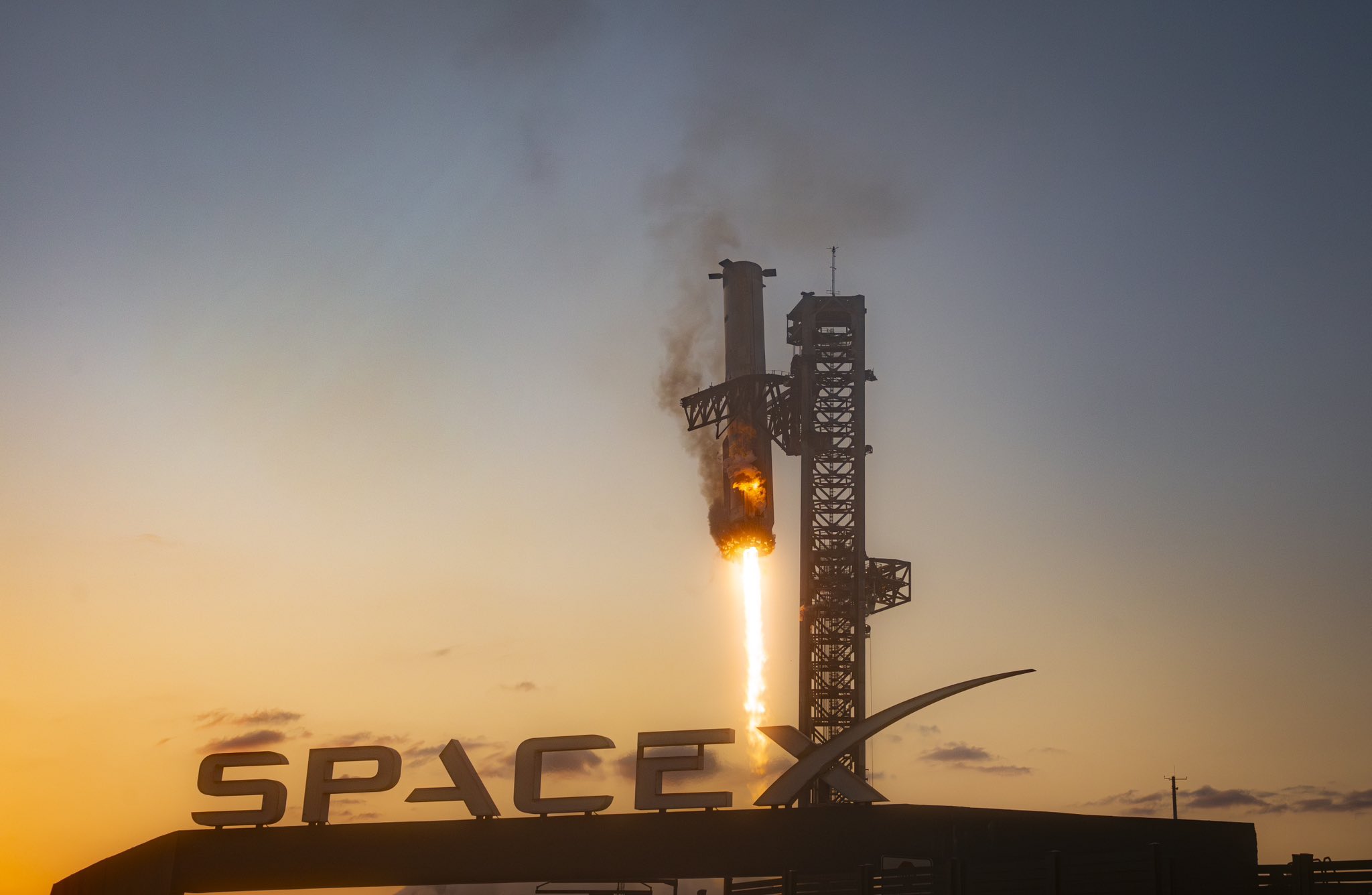
SpaceX has confirmed a new target date for the seventh Starship test launch after weather in Texas delayed the first scheduled date for “three or four days.”
The company is now targeting the launch for Monday, January 13, at 4 p.m. CST or 5 p.m. EST. The launch date is not set in stone as any variety of delays could impact this, but SpaceX hopes to finally take off after a delay that pushed it back from January 10.
🚨 STARSHIP LAUNCH DATE: @SpaceX says Starship’s 7th test flight is now targeted for Monday, January 13 at 4pm CST
— TESLARATI (@Teslarati) January 8, 2025
What’s new with this Starship launch
With this being the seventh test launch of Starship, there are several things that the company will change and hope to accomplish. All of these launches are done in preparation for eventually taking flight to Mars, something that will happen next year, according to CEO Elon Musk.
First, SpaceX is rolling out a next-generation ship with “significant upgrades.” Forward flaps have been made smaller and are repositioned away from the heat shield, which will “reduce their exposure to reentry heating.”
There is also a 25 percent increase in propellant volume, a new fuel feedline system for the Raptor vacuum engines, and a better-than-ever propulsion avionics module that will control the valves and reading sensors.
Avionics, as a whole, underwent a redesign and now have more capability and redundancy for missions as they become more complex.
Starlink test
SpaceX is also planning to deploy 10 Starlink simulators that are similar in size and weight to the next-generation Starlink satellites:
“While in space, Starship will deploy 10 Starlink simulators, similar in size and weight to next-generation Starlink satellites as the first exercise of a satellite deploy mission. The Starlink simulators will be on the same suborbital trajectory as Starship, with splashdown targeted in the Indian Ocean. A relight of a single Raptor engine while in space is also planned.”
Ship return and catch
There will be several experiments that have to do with returning Starship and various catch scenarios and sequences. One of which will see “a significant number of tiles be removed to stress-test vulnerable areas across the vehicle.”
The ship’s reentry profile was also intentionally designed to test the structural limits of the flaps while at the point of maximum dynamic pressure during reentry.
Currently, SpaceX did not detail whether it would attempt another catch during this test launch. These are usually game-time decisions.
Need accessories for your Tesla? Check out the Teslarati Marketplace:
- https://shop.teslarati.com/collections/tesla-cybertruck-accessories
- https://shop.teslarati.com/collections/tesla-model-y-accessories
- https://shop.teslarati.com/collections/tesla-model-3-accessories
Please email me with questions and comments at joey@teslarati.com. I’d love to chat! You can also reach me on Twitter @KlenderJoey, or if you have news tips, you can email us at tips@teslarati.com.

